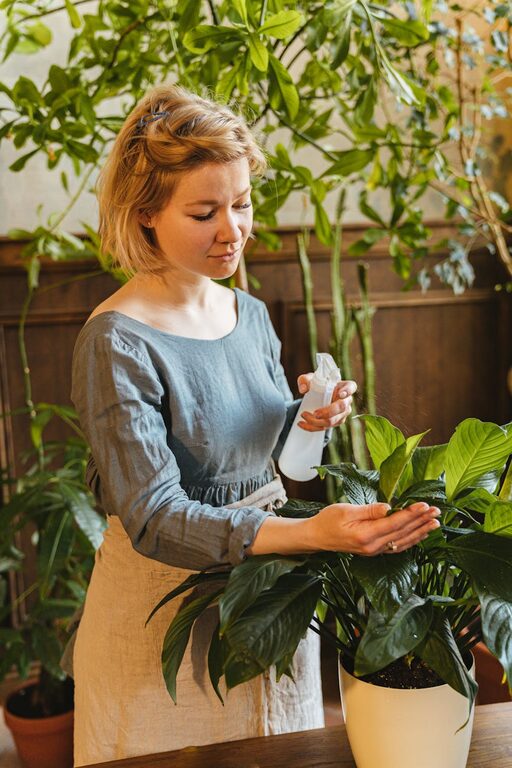Bringing houseplants into your home is a wonderful way to add life, color, and fresh air to your space. Whether you have a few succulents on your windowsill or a collection of lush tropical plants, knowing how to care for them properly is key to keeping them healthy and thriving. In this post, we’ll explore essential tips to help you maintain happy, vibrant houseplants with ease.
Understanding Your Houseplant’s Needs
Every plant species has unique requirements, but most houseplants share basic needs for water, light, humidity, and nutrients. The more you understand your plant’s natural environment, the better you can replicate it indoors.
Know Your Plant’s Light Preferences
– Bright, indirect light: Most popular houseplants like pothos, peace lilies, and snake plants prefer bright but indirect sunlight. Place them near a window with filtered light.
– Low light: Some plants, like ZZ plants and certain ferns, tolerate lower light conditions but still need some natural light to stay healthy.
– Direct sunlight: Succulents and cacti usually thrive with several hours of direct sunlight. South-facing windows are ideal for these sun lovers.
Tip: Observe your plant’s reaction to light. Pale or yellowing leaves can mean too much direct sun, while leggy growth often signals insufficient light.
Watering Wisely
Overwatering is one of the most common mistakes in houseplant care. Each plant has a preferred watering schedule, but a good rule of thumb is:
– Check the soil moisture before watering by sticking your finger about an inch into the soil.
– Water thoroughly when the top inch of soil feels dry.
– Avoid letting your plants sit in standing water; ensure proper drainage.
Tip: Use pots with drainage holes and saucers to prevent water logging.
Providing the Right Environment
Maintain Appropriate Humidity
Many houseplants, especially tropical species, love humidity. Indoor air can become dry, especially during winter with heating systems running.
– Increase humidity by misting leaves regularly with water.
– Place a humidity tray filled with water and pebbles under plant pots.
– Use a humidifier in rooms with several houseplants.
Temperature Considerations
Most houseplants prefer temperatures between 65°F to 75°F (18°C to 24°C). Avoid placing plants near:
– Drafty windows or doors
– Air conditioning vents or heaters
– Sudden temperature fluctuations
Consistent warmth and stability support healthy growth and prevent stress.
Feeding Your Plants
Houseplants need nutrients to stay vibrant. Use a balanced, water-soluble fertilizer every 4 to 6 weeks during the growing season (spring and summer). Reduce fertilizing in fall and winter when many plants enter dormancy.
Tip: Follow package instructions carefully — over-fertilizing can harm your plants.
Routine Maintenance for Healthy Growth
Pruning and Cleaning
Regularly remove yellow, dead, or damaged leaves to encourage new growth and prevent pests or diseases.
– Trim leggy or unruly stems to maintain shape.
– Clean leaves gently with a damp cloth to remove dust, improving photosynthesis.
Repotting
Plants can outgrow their pots and become root-bound, limiting their growth. Signs you may need to repot include roots growing out of drainage holes or soil drying out too quickly.
– Repot in spring using fresh potting soil and a slightly larger pot.
– Be gentle with roots to avoid damage.
Common Challenges and How to Address Them
Pest Management
Houseplants can sometimes attract pests like spider mites, aphids, or mealybugs. To spot infestations:
– Look for sticky residue, webbing, or small insects on leaves and stems.
– Isolate affected plants promptly.
Simple treatments include washing leaves with mild soapy water or using insecticidal soap designed for indoor plants.
Dealing with Problems
If your plant shows signs of trouble such as:
– Wilting leaves
– Yellowing or browning edges
– Stunted growth
Assess factors like watering frequency, light levels, and temperature first. Adjust care as needed and remember, recovery takes time.
Creating a Houseplant Care Routine
Consistency is key to thriving indoor plants. Here’s a simple weekly checklist:
- Check soil moisture and water as needed.
- Inspect plants for pests or disease.
- Rotate plants to ensure even light exposure.
- Wipe leaves to keep them dust-free.
- Adjust environmental factors like humidity or temperature.
Conclusion
Keeping houseplants healthy is a rewarding hobby that brightens your home and boosts wellbeing. With a little attention and understanding of their needs, you can enjoy flourishing plants throughout the year. Start with these tips, and watch your indoor garden thrive!
Happy planting!

